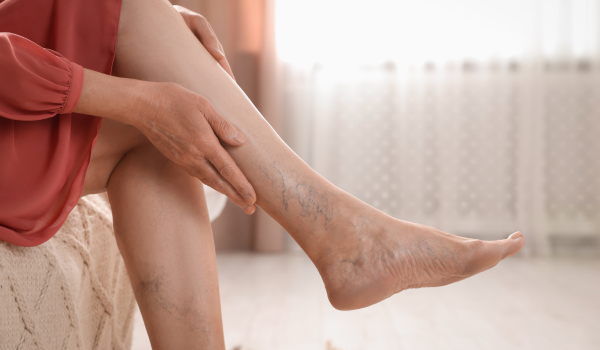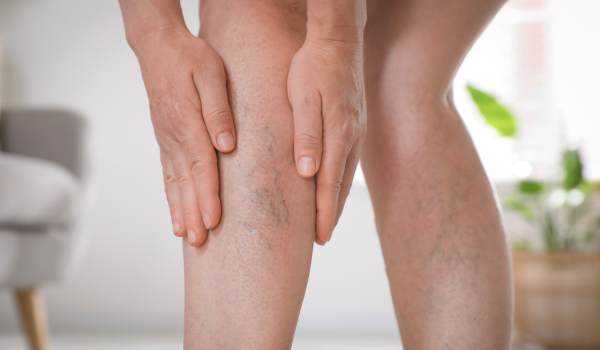.png)
Understanding Venous Stasis
Venous stasis is a condition in which blood flow through the veins, especially in the legs, becomes sluggish or stagnant. This impaired circulation is often the result of faulty vein valves or weakened vessel walls, allowing blood to pool instead of moving efficiently back to the heart. Over time, this slow flow leads to increased venous pressure and a cascade of physiological changes.
Though venous stasis may begin with mild symptoms, its long-term effects on the body can be progressive and debilitating. Left unmanaged, it can lead to chronic venous insufficiency, skin damage, ulceration, and even life-threatening complications.
Early Circulatory Changes
In the initial stages, venous stasis may not cause noticeable symptoms. However, significant changes begin to take place internally. The slowing of venous return results in:
-
Increased pressure in the lower leg veins
-
Stretching and weakening of vein walls
-
Reduced efficiency of the calf muscle pump
-
Subtle skin and tissue fluid changes
As the veins struggle to return blood to the heart, the body’s natural mechanisms begin to falter, setting the stage for more visible symptoms.
Leg Swelling and Discomfort
One of the earliest signs of venous stasis is swelling in the lower legs, ankles, and feet—also known as peripheral edema. This occurs when fluid leaks from the overpressured veins into surrounding tissues.
Over time, swelling becomes:
-
More persistent, especially by day’s end
-
Accompanied by aching or heaviness
-
Less responsive to rest or elevation
Chronic swelling reduces mobility, causes fatigue, and increases the risk of skin breakdown and infection.
Skin Discoloration and Texture Changes
As venous stasis progresses, skin changes begin to appear—particularly around the lower legs and ankles. The trapped red blood cells break down and deposit hemosiderin, a pigment that stains the skin brown or reddish.
Additional changes may include:
-
Thickening of the skin (lipodermatosclerosis)
-
Shiny, tight texture
-
Itching, scaling, or eczema
-
Increased sensitivity or burning sensations
These signs indicate advanced damage to the tissue and underlying microcirculation.
Varicose Vein Formation
Weakened valves and vein walls eventually give rise to varicose veins—enlarged, twisted veins visible beneath the skin. These are a hallmark of chronic venous insufficiency and often worsen over time if venous stasis is not addressed.
Varicose veins can lead to:
-
Pain, especially after prolonged standing
-
Cosmetic concerns and self-consciousness
-
Night cramps or restless legs
-
Blood clots in superficial veins (thrombophlebitis)
If left untreated, varicose veins can contribute to ulcer development and clotting risks.
Development of Venous Ulcers
One of the most serious consequences of longstanding venous stasis is the development of venous leg ulcers—open, slow-healing wounds typically found near the ankles.
Ulcers form due to:
-
Chronic skin inflammation
-
Poor oxygen and nutrient delivery to tissues
-
Localized infection from weakened skin barriers
These ulcers are often:
-
Painful and prone to infection
-
Difficult to heal, sometimes lasting months or years
-
Recurrent, especially without proper compression therapy
They significantly impact quality of life and may lead to hospitalizations or limb complications.
Muscle and Tissue Damage
Ongoing blood pooling causes not only superficial skin changes but also deeper tissue damage. Muscles, tendons, and connective tissues in the lower legs may undergo degenerative changes, resulting in:
-
Muscle fatigue and weakness
-
Reduced calf pump function
-
Decreased flexibility and mobility
-
Increased risk of falls or injury
These structural effects further reduce circulation, creating a feedback loop that worsens stasis.
Nerve Involvement and Pain
As inflammation builds and tissues swell, nearby nerves may become compressed or irritated. Patients with chronic venous stasis often report:
-
Burning or tingling in the lower legs
-
Shooting pain or numbness
-
Sensitivity to touch or clothing
-
Difficulty sleeping due to discomfort
Nerve irritation may mimic or overlap with neuropathy, complicating diagnosis and treatment.
Impaired Wound Healing
Tissues affected by venous stasis are deprived of adequate oxygen and nutrients. As a result, the body’s ability to repair itself becomes impaired, leading to:
-
Delayed healing of cuts, scrapes, or bruises
-
Increased susceptibility to infection
-
Formation of chronic wounds
-
Resistance to conventional treatment
These factors combine to increase the burden of care, especially in older adults or those with diabetes or immune disorders.
Risk of Infection
Stagnant blood and damaged skin provide a perfect environment for bacterial growth. Over time, individuals with venous stasis are at higher risk for:
-
Cellulitis (bacterial skin infection)
-
Fungal infections around the ankles or toes
-
Abscess formation or deep-tissue infections
-
Sepsis in severe, untreated cases
Prompt wound care and infection control are vital for preventing systemic complications.
Impact on Daily Life
The cumulative effects of venous stasis take a toll on physical activity, independence, and emotional well-being. Common lifestyle consequences include:
-
Limited ability to stand or walk for long periods
-
Difficulty with daily tasks or employment
-
Constant need to elevate legs or wear compression gear
-
Embarrassment or frustration from visible symptoms
-
Anxiety about disease progression or ulcer recurrence
Without proper management, these challenges can lead to social withdrawal and reduced quality of life.
Psychological Burden
Living with a chronic condition like venous stasis can contribute to mental health challenges, such as:
-
Depression from ongoing pain or disability
-
Sleep disturbances due to discomfort
-
Body image concerns from visible skin or vein changes
-
Fear of complications like ulcers or amputation
Addressing both physical and emotional aspects is essential for holistic care.
Increased Risk of Clot Formation
Venous stasis is one component of Virchow’s Triad—a set of factors that predispose individuals to thrombus (clot) formation. Over time, sluggish blood flow can increase the risk of:
-
Superficial vein thrombophlebitis
-
Deep vein thrombosis (DVT)
-
Pulmonary embolism (if a clot travels to the lungs)
This makes prevention and monitoring critical, especially in high-risk individuals.
Progression to Chronic Venous Insufficiency
Without intervention, venous stasis typically progresses to chronic venous insufficiency (CVI), a long-term condition marked by:
-
Persistent swelling
-
Skin breakdown and ulcers
-
Valve failure throughout the venous system
-
Debilitating symptoms requiring lifelong care
At this stage, treatment becomes more intensive and less likely to reverse the underlying damage.
Preventive Measures
The good news is that early intervention can halt or slow the effects of venous stasis. Effective strategies include:
-
Daily leg elevation
-
Use of compression stockings
-
Regular exercise (especially walking or calf raises)
-
Avoiding prolonged sitting or standing
-
Maintaining a healthy weight
-
Managing other health conditions like diabetes or heart failure
Proactive care makes a significant difference in long-term outcomes.
Treatment Over Time
Treatment evolves with disease progression and may involve:
-
Conservative care: lifestyle changes, compression, medications
-
Minimally invasive procedures: sclerotherapy, laser ablation
-
Surgical options: vein stripping, venous bypass
-
Wound care: specialized dressings, debridement, antibiotics
-
Multidisciplinary support: vascular specialists, dermatologists, physical therapists
Early diagnosis remains the most effective way to prevent invasive interventions later on.
Conclusion: Watch the Signs, Protect Your Health
Venous stasis may start as mild swelling or leg fatigue, but over time, it can deeply impact nearly every layer of tissue in the lower body—from the skin to the veins to the muscles and nerves. Without early attention and ongoing management, its progression can lead to chronic pain, wounds, infection, and even life-threatening complications.
Understanding how venous stasis affects the body empowers you to take preventive steps now—before long-term damage takes hold.

.png)
.png)
.png)
.png)
.png)
.png)
.png)
.png)
.png)



